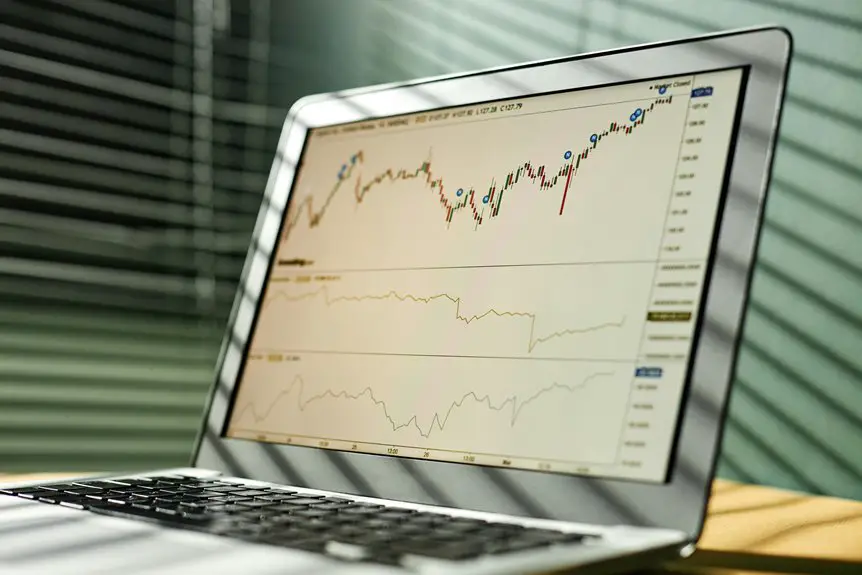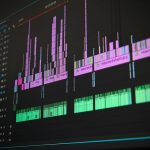When you're setting up your workspace, it's essential to ensure your monitor and computer work well together. If your graphics card can't support your monitor's resolution and refresh rate, you might experience lag or poor visuals. Understanding these specifications can make a significant difference in your productivity. But there's more to consider beyond just the basics—let's explore the key elements that can elevate your work experience.
Table of Contents
Key Takeaways
- Ensure your graphics card supports the monitor's resolution and refresh rate to prevent lag and maintain performance.
- Match the monitor's resolution with your CPU and RAM capabilities to avoid performance bottlenecks during tasks.
- Use high-quality cables like HDMI or DisplayPort that support the monitor's resolution for optimal data transfer and display quality.
- Regularly close unnecessary applications to improve system performance and ensure smooth operation with high refresh rates.
- Adjust display settings to match the monitor's specifications, helping to avoid screen flickering and resolution issues.
Understanding Monitor Specifications
When you're choosing a monitor, understanding its specifications is crucial for getting the best performance out of your computer.
You'll want to focus on key aspects like resolution, refresh rate, and response time. A higher resolution provides sharper images, making it easier to read text and view details.
The refresh rate, measured in hertz, indicates how many times the screen refreshes per second; a higher rate leads to smoother visuals, especially in gaming or video playback.
Response time is essential for reducing motion blur, making fast-moving images clearer.
Additionally, consider panel types like IPS or TN, as they affect color accuracy and viewing angles.
Evaluating Computer Hardware Compatibility
Before investing in a new monitor, it's essential to ensure that your computer's hardware can support it effectively.
Check your graphics card first; it needs to have the right ports and enough power to handle the monitor's specifications. If you're considering a higher resolution monitor, make sure your GPU can manage that without lag.
Also, evaluate your CPU and RAM; they should be up to par to prevent bottlenecks in performance.
Don't forget to consider your operating system; it should support the monitor's features.
Lastly, verify that your power supply can handle the additional load.
Taking these steps will help you avoid compatibility issues and ensure a smooth, efficient work experience.
The Importance of Resolution and Refresh Rate
Resolution and refresh rate are crucial factors that can significantly impact your overall computing experience. Higher resolution provides sharper images and clearer text, allowing you to see details more vividly. On the other hand, refresh rate determines how smoothly your screen displays motion, which is especially important for gaming or video editing.
Here's a quick comparison of common resolutions and refresh rates:
| Resolution | Refresh Rate |
|---|---|
| 1920 x 1080 (Full HD) | 60Hz |
| 2560 x 1440 (QHD) | 144Hz |
| 3840 x 2160 (4K) | 60Hz |
| 2560 x 1440 (QHD) | 75Hz |
| 1920 x 1080 (Full HD) | 120Hz |
Choosing the right combination ensures your tasks run smoothly, enhancing productivity and enjoyment.
Connecting Your Devices: Cables and Ports
Connecting your devices effectively is essential for maximizing your monitor's performance. Start by identifying the ports available on both your monitor and computer. Common options include HDMI, DisplayPort, and USB-C.
Choose the right cable that matches these ports; this ensures optimal data transfer and display quality. If you're using a high-resolution monitor, like 4K, ensure your cable supports that resolution and refresh rate.
Additionally, be mindful of cable length and quality, as poor-quality cables can lead to signal degradation. Once connected, check your display settings to confirm the resolution matches your monitor's capabilities.
This simple step can enhance your overall experience, allowing you to work smoothly without any display issues.
Troubleshooting Common Performance Issues
While using a monitor, you might encounter performance issues that can disrupt your workflow. Here are some common problems and quick fixes to consider:
- Screen Flickering: Check your cable connections. A loose or damaged cable can cause flickering. Try a different cable if needed.
- Resolution Issues: Ensure your display settings match your monitor's native resolution. Go to display settings and adjust accordingly.
- Lagging or Slow Response: This could be due to high refresh rates or running multiple applications. Close unnecessary programs and tweak graphics settings for smoother performance.
Frequently Asked Questions
How Do I Choose the Right Monitor Size for My Workspace?
To choose the right monitor size for your workspace, consider your available space, viewing distance, and intended use. A larger screen is great for multitasking, while a smaller one suits confined areas better.
Can I Use Multiple Monitors With a Single Computer?
Yes, you can use multiple monitors with a single computer. Just make sure your graphics card supports it, and connect the monitors using the appropriate cables. You'll enjoy increased productivity and a more efficient workspace.
What Impact Does Color Accuracy Have on Performance?
Color accuracy affects your performance by ensuring what you see on screen aligns with reality. If you're editing photos or designing, accurate colors help you make better decisions, resulting in higher quality work and fewer revisions.
Are Gaming Monitors Suitable for Professional Work?
Gaming monitors can be suitable for professional work, especially if you need high refresh rates and vibrant colors. Just ensure they meet your specific requirements for resolution and color accuracy to enhance your productivity.
How Often Should I Upgrade My Monitor for Optimal Performance?
You should consider upgrading your monitor every three to five years, especially if you notice decreased performance, resolution issues, or if your work demands higher specifications. Staying updated ensures you maintain optimal productivity and visual quality.




